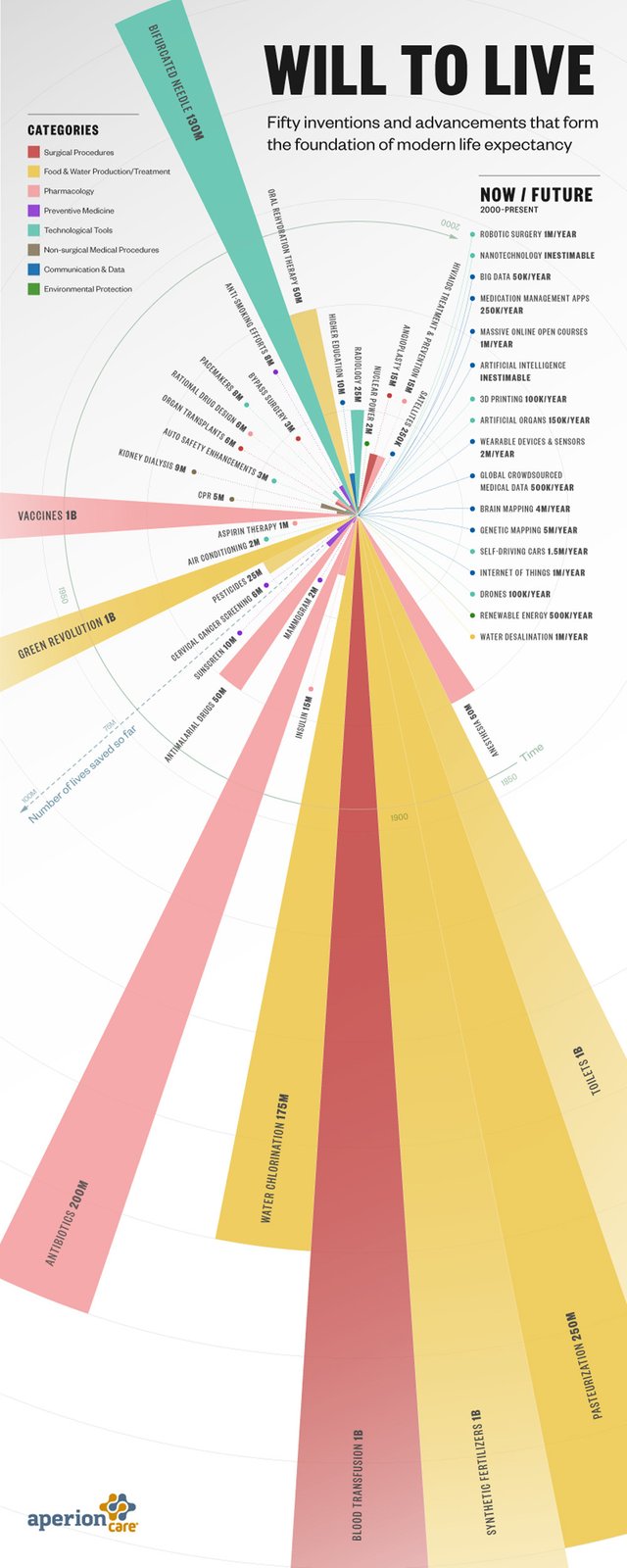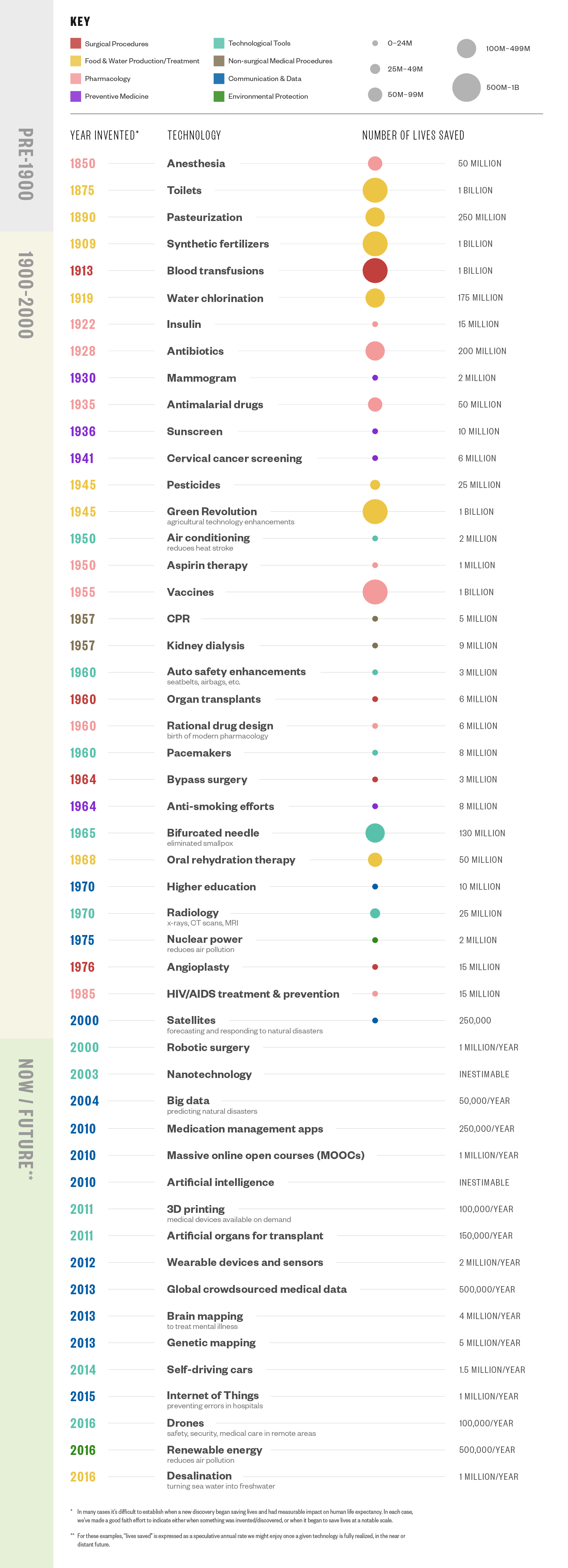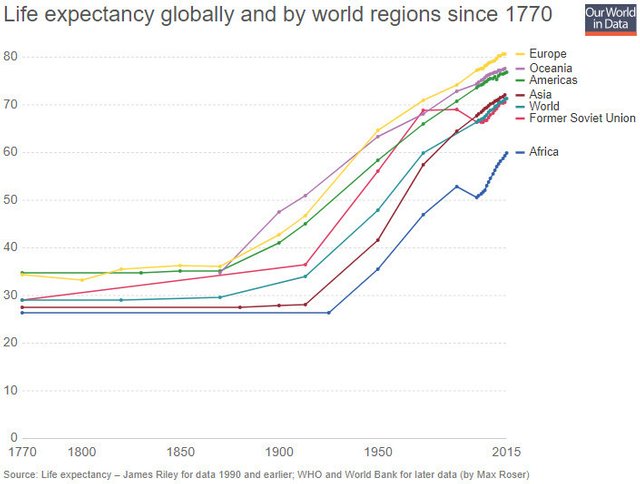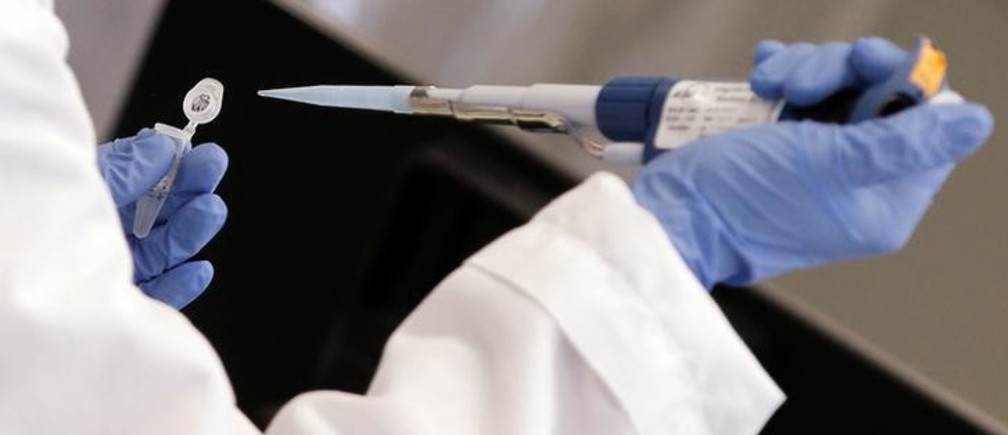These breakthroughs have saved billions of lives
For most of civilized history, life expectancy fluctuated in the 30 to 40 year range.

Child mortality was all too common, and even for those that made it to adulthood, a long and healthy life was anything but guaranteed. Sanitation was poor, disease was rampant, and many medical practices were based primarily on superstition or guesswork.
By the 20th century, an explosion in new technologies, treatments, and other science-backed practices helped to increase global life expectancy at an unprecedented rate.
From 1900 to 2015, global life expectancy more than doubled, shooting well past the 70 year mark.
Important breakthroughs
What were the major innovations that made the last century so very fruitful in saving lives?
Today’s infographic from AperionCare highlights the top 50 breakthroughs, ranging from pasteurization to the bifurcated needle, that have helped propel global life expectancy upwards.
Interestingly, while many of these innovations have some linkage to the medical realm, there are also breakthroughs in sectors like energy, sanitation, and agriculture that have helped us lead longer and healthier lives.
To see innovations on an individual basis, AperionCare breaks them down further as follows:

The breakthroughs that are credited with saving the most lives?
Toilets, synthetic fertilizers, blood transfusions, the green revolution (also known as the “Third Agricultural Revolution”), and vaccines are each credited with saving 1 billion lives. Meanwhile, pasteurization, water chlorination, antibiotics, antimalarial drugs, and the bifurcated needle have saved hundreds of millions of lives each.
There are also some unusual entries to the list.
It turns out that satellites have actually saved 250,000 lives, thanks to the ability to better forecast natural disasters. Nuclear power also gets a shout out – and it may surprise some people that nuclear energy is the least deadly form of energy per kilowatt generated.
Progress in life expectancy
For a graphical look at how this all has impacted life expectancy, the following chart from Our World in Data makes a very clear case:

The impact from these new technologies was first experienced in Europe at the end of the 1800s – and other continents quickly saw the benefits thereafter.
Impressively, Africa has now passed the 60 year mark in life expectancy, with numbers still rising.
src

